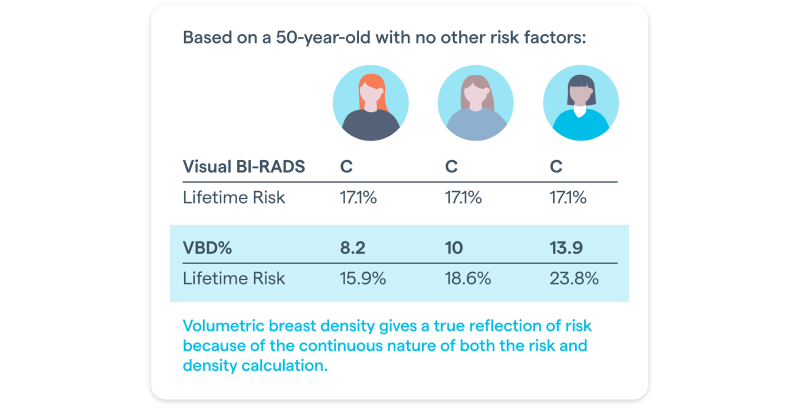Understanding the biological aspects of breast density, its role as a risk factor, and the increased risk associated with high breast density can help in developing effective screening and prevention strategies.
Breast density: A biological overview
- Breast density refers to the proportion of fibroglandular tissue compared to adipose (fat) tissue in the breast.
- Dense breasts have a higher ratio of fibroglandular tissue, which includes glands, ducts, and connective tissue, relative to fat.
- Factors influencing breast density include genetics, hormonal levels, age, and body mass index (BMI).
- Younger women and those with lower BMI tend to have dense breasts.
- Hormonal changes during a woman’s life, such as those occurring during pregnancy or hormone replacement therapy, can affect breast density.
- Lifestyle choices also play a role: higher physical activity levels are associated with lower density, while increasing alcohol consumption can lead to higher density.
Breast density as a risk factor for breast cancer
The increased risk of developing breast cancer in women with high breast density is well-documented. In fact, studies have shown that women with high breast density are four to six times more likely to develop breast cancer compared to those with low breast density.

Dense breast tissue contains more cells that have the potential to become cancerous. One report found that the remodeling and stiffening of the fibrous cells promote high mammographic density and potentially trigger neoplasia changes within the epithelial cells that line the ducts and lobules.
The most common risk factor for breast cancer
Beyond increasing age and being a woman, breast density is the most common and important risk factor for developing breast cancer.
High breast density is present in ~40% of women, and presents a higher risk, with a similar impact as having a family history in 1 or 2 first-degree relatives.
Additionally, the masking effect, where dense tissue obscures tumors on mammograms, can lead to delayed detection and diagnosis, which often results in cancer being discovered at a more advanced stage.
Women with high breast density should be aware of their increased risk (especially since the FDA has now mandated density reporting) and the limitations of mammography. Supplemental screening methods, such as ultrasound and MRI, are recommended for better detection of dense breast tissue.
Plus, every woman has a unique amount of dense tissue, and the BI-RADS four-category system often falls short in providing the detail needed for personalized risk assessment. A more sensitive and accurate measurement of breast density is crucial to understanding individual risk levels.

The Volpara Health suite of services offers numerous ways to standardize measurement and assess breast density with precision. Contact us today to consult with one of our breast density experts.
#WorldDenseBreastDay

